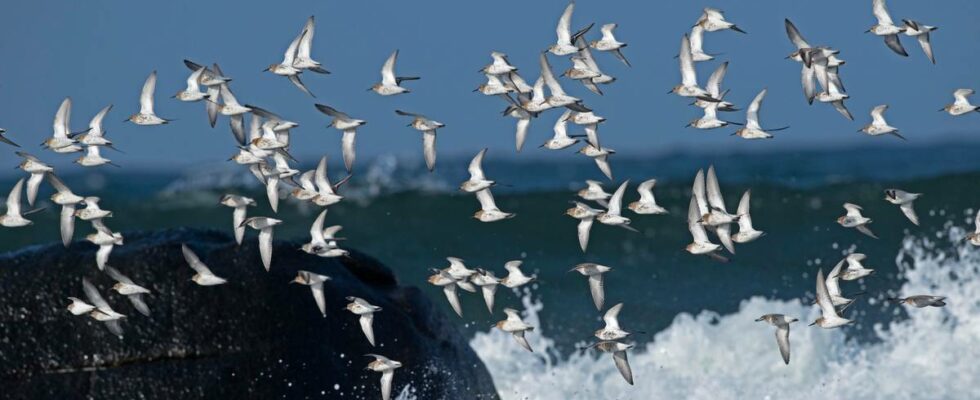It was grim reading when the World Conservation Union (IUCN) updated the global red list for a number of wading birds. A total of 16 different waders are moved to a more serious red list category. Among them we find the tundra loon and mountain marsh runner. The birds have had their status changed from viable to vulnerable. This means that the species is threatened and has had a strong reduction. Nature conservation adviser in BirdLife Martin Eggen is concerned about the development. – The birds are good indicators of the state of nature, and we know a lot about them. Therefore, this is a kind of summary of how things are going with nature. This is the story of the natural crisis. We continue to wage a war against nature which means that there are fewer birds and animals year after year. The snipe has had its status changed from viable to near threatened during the update of the global red list. Photo: Trond Berg / news The waders are among the bird groups that are declining the most, according to Eggen. The birds are only getting fewer and fewer and the consequences are great. Large wetland areas are disappearing – When the bird population declines, the birds have weakened reproduction, health and are less able to migrate and find wintering sites. Eggen fears more red list updates in the future if measures are not taken. – Now that’s enough. Instead of destroying more, we must restore the areas that have been destroyed so that bird populations can return. Martin Eggen, Nature Conservation Adviser at Birdlife, formerly known as the Norwegian Ornithological Association. Photo: PRIVAT – We are building down the wetland along the coast. The rich river deltas are supergrounds for birds during migration. It is also where they find food during the breeding season and before they fly into the mountain moors. The management of wetlands is not sustainable as we experience continuous losses. 85 percent of the wetland has been lost since the 18th century. Wetland is a nature type that includes, among other things, marshes, lakes and salt marshes. Wetlands often have high plant production and provide a rich insect and animal life. Photo: Eystein Ness – Important to protect the areas The natural type often has high plant production and forms the basis of life for a rich insect and animal life. Klungsetfjæra and Røvika in Fauske municipality are examples of super fields and function as gas stations for the birds on their long journeys between north and south. – The areas are in the very top tier of globally important bird areas in Norway, says Eggen. The areas are extremely important and should be protected, according to the nature conservation adviser. Eggen praises Fauske municipality for protecting the area, but points out that only protection by royal decree can secure the area from future development pressure and the priorities of municipal politicians. – It is important that we protect the areas that are under real threats and where there are the most endangered species. Researcher: – Protection will be beneficial Senior researcher at the Norwegian Institute for Natural Research (NINA), Bård Gunnar Stokke points to several factors that can help reverse the trend and increase the population. – Protection and restoration of wetlands will probably be beneficial for a number of wading bird species. He adds that it is also important to ensure good habitats for the waders along their migration routes. – Many delta areas, for example, have been developed and destroyed. It is important to ensure that the areas that have not been developed remain good resting areas for migrating waders and other species. In recent years, Stokke has been responsible for creating the Norwegian Red List for birds and works with population monitoring. – The assessments in the Norwegian Red List for species from 2021 show that the situation is relatively bad for some of the waders in Norway According to Stokke, intensified agricultural operations are a known negative factor for the viper and great grebe. The operation entails early grass growth, efficient drainage, cultivation and regrowth of natural habitats such as bogs and grasslands. Photo: Ole Andreas Bø – Scary Stokke also says that the waders’ habitats are under pressure. – This may be in the breeding areas, under cover or in the wintering areas. It looks particularly bad in North and South America. There, as many as 11 of the 16 wader species have been given a serious red list category. Senior researcher at NINA, Bård Stokke. Photo: NINA – That species show a decline in their populations is of course worrying, and especially when this happens on a global level as indicated in the revised assessment from the IUCN. In the worst case, this could lead to the global extinction of the species. Species with a particularly large decline in populations are viper and great hornbill. But this species has also become fewer in number: Tjeld is a feathered bird species of which there are fewer. Photo: wikipedia But the development does not only apply to birds. According to the IUCN, 28 percent of all assessed species are at risk of extinction. – There is a frightening amount. However, there are also a number of wading bird species where the populations have apparently been relatively stable over time. Published 09.11.2024, at 11.31 Updated 09.11.2024, at 11.39
ttn-69
Waders are struggling all over the world – news Nordland

